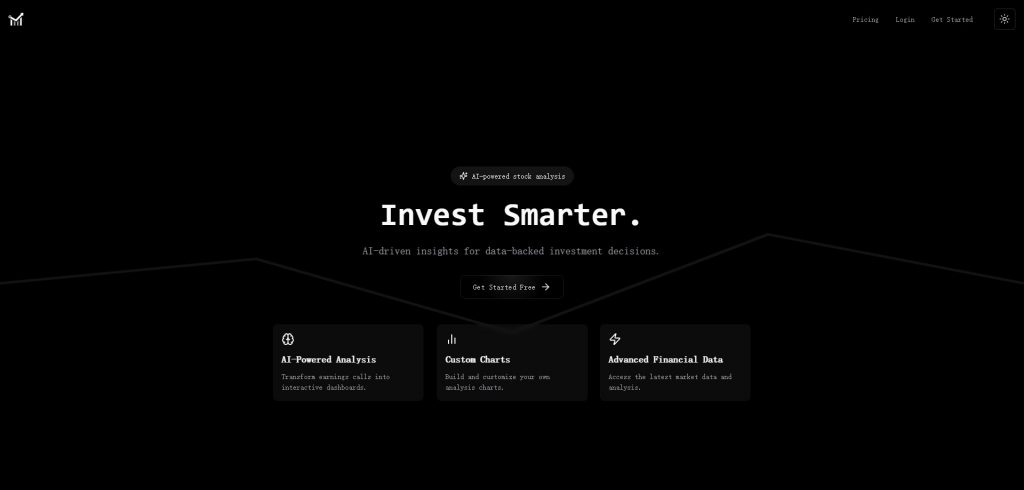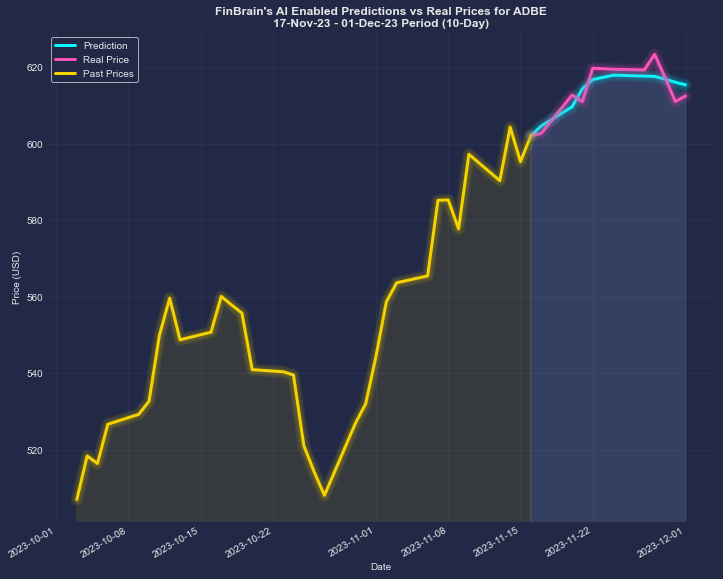20 Best Tips For Choosing Best Artificial Intelligence Stocks Sites
20 Best Tips For Choosing Best Artificial Intelligence Stocks Sites
Blog Article
Top 10 Tips To Customize Ai Trading Platforms For Your Strategy
It is important to note that AI trading platforms that incorporate stock analysis and forecasting can provide users with the possibility of customizing their platform according to their goals in trading, risk tolerances, and market conditions. Platforms that have powerful customization capabilities will increase the efficiency of your trading. Here are the top 10 suggestions for evaluating the customization options of these platforms.
1. Evaluate Pre-Built Strategy Templates
A variety of templates: See whether the platform provides various pre-designed strategies for different trading styles (e.g. day trading, swing trading, long-term investing).
Simple to use: Consider how easy it is to modify and use these templates according to your preferences.
Performance history: Verify if the platform provides historical performance data for previously-built strategies.
2. Create Custom Strategy
Drag-anddrop tools: Look out for platforms that offer user-friendly drag and drop interfaces for customizing strategies.
Coding Options: If you are an advanced user, ensure that the platform is able to support customized coding.
Flexibility: Make sure the platform lets you define your entry/exit parameters as well as risk management metrics and other important components of your strategy.
3. Check for Backtesting Capabilities
Historical data: Ensure that the platform has sufficient historical data for back-testing strategies.
Flexible settings: Ensure that you are able to alter the parameters when backtesting.
Performance metrics: Make sure the platform has detailed metrics of performance (e.g. Win rate, Sharpe Ratio, Drawdown) when backtesting strategies.
4. Evaluate Real-Time Strategy Testing
Paper trading: Ensure that the platform lets you simulate or test your strategies without putting any money at risk.
Live testing - Make sure that you can test strategies with tiny amounts to test how they work.
Real-time adjustments: Determine if you can tweak strategies in real-time, based on market conditions.
5. Integrate Integration with Technical Indicators
Indicator library - Check if a platform provides an extensive collection of technical indicators, such as moving averages (e.g. RSI), MACD or RSI.
Custom indicators: Make sure that you have the ability to import or develop custom indicators to match your plans.
Combination of indicators Check to see if the platform allows the combination of multiple indicators to create complicated strategies.
6. Check for Risk Management Tools
Stop-loss/take-profit: Ensure the platform allows you to set stop-loss and take-profit levels within your strategies.
Size of the position: See whether you have the ability to establish guidelines for the size of your portfolio (e.g. Fixed amount percent of your portfolio) to manage the risk.
Risk-reward ratio: Determine whether the platform can set risk-reward ratios for specific strategies or trades.
7. Evaluate Multi-Asset Strategy Support
Asset classes: Make sure your platform is able to support different asset classes, including ETFs, stocks and options.
Cross-asset strategies: Determine if you can create strategies that use various asset classes (e.g. Hedging, pairs trading).
Market coverage. Check if the platform includes the markets that you're looking to invest in (e.g. US international, cryptocurrencies).
8. Review the automation, Execution and Execution
Automated trading: Ensure that the platform can be capable of automating strategies based on the defined rules.
Types of orders: Make sure that the platform can execute different types of orders, such as stop, limit, market and stop.
Latency: Make sure that the platform you are using has a minimum latency for trading, especially if you use high-frequency strategies.
9. Look for strategies optimization tools
Optimization of parameters: Make sure the platform provides tools to optimize the parameters of your strategy (e.g. grid search or genetic algorithms).
Machine learning integration. See if your platform incorporates machine learning capabilities to improve and refine strategies.
Evaluation of scenarios: Find out if your platform is able of testing different strategies for various market conditions, including bullish, bearish, or volatile.
10. Review Community Support and Feedback from Users
Feedback from users is essential to assess the performance of the platform.
Forums for community members. Find out if the users are able to share information and discuss their strategies in a lively community.
Support resources - Ensure that the platform includes tutorials and documentation to help users create and enhance strategies.
Bonus Tips
Trial period - Use the trial for free to test strategy customization capabilities.
Scalability: Ensure that the platform can handle increasingly complicated strategies as your trading evolves.
Customer support: Find out if support for your questions or concerns related to the strategy.
These tips will help you evaluate the customization options of AI trading platforms which analyze and predict the market. In this way you can select one that is compatible with your trading goals, which allows you to refine and apply your strategies. A platform that is robustly customizable capabilities will allow you to adapt to changes in market conditions and enhance your trading performance. View the top inciteai.com AI stock app for more examples including free ai tool for stock market india, best ai for trading, using ai to trade stocks, best ai etf, trading ai bot, canadian ai stocks, ai stock trading bot free, investing ai, ai investment app, ai trading and more.
Top 10 Suggestions For Evaluating The Social And Community Features Of Ai Stock Trading Platforms
To better know the way that users interact, learn and share, it is vital to evaluate the social and community elements of AI-driven stock trading platforms. These features can enhance the user's experience as well as provide valuable assistance. Here are the top 10 strategies for evaluating social and community features on such platforms.
1. Active User Community
See if there is an active community of users that participates regularly in discussion and shares their information.
Why: An active community indicates a vibrant ecosystem where users can learn and grow together.
2. Discussion Forums and Boards
You can assess the effectiveness of a discussion forum or message board by looking at the activity levels.
Why Forums are important: They allow users to discuss market trends as well as ask questions and exchange strategies.
3. Social Media Integration
Tips: Find out if the platform permits users to share their insights and updates through social media platforms, for example, Twitter or LinkedIn.
What is the reason? Social media can be utilized to boost engagement and offer real-time market information.
4. User-Generated Materials
Search for tools that allow you create and share content such as articles, blogs or trading strategies.
Why: Content created by users fosters collaboration and offers a different perspective.
5. Expert Contributions
See if any experts from the industry such as market analysts or AI experts, have contributed.
Why? Expert opinions add depth and credibility to community discussions.
6. Chat, Real-Time Messaging and Chat in Real Time
Tips: Ensure you are able to instantly communicate with users by evaluating the real-time chat options and the messaging.
What's the reason? Real-time interactions allow for quick information exchange and collaborative work.
7. Community Moderation Support
TIP: Assess the moderated and support within your community.
What is the reason? Moderation is crucial to ensure a positive and friendly atmosphere. Support helps users resolve their problems as fast as they can.
8. Webinars and Events
TIP: Find out whether your platform offers live sessions, Q&As, or webinars.
The reason: These events provide the opportunity to interact directly and interaction with professionals from the industry.
9. User Reviews
TIP: Find options that let users write reviews or feedback about the site and its community features.
The reason: Feedback from users can help identify strengths and areas for improvement within the community environment.
10. Gamification of Rewards
TIP: Check whether the platform has gamification elements, such as badges or leaderboards.
Gamification is a powerful tool that helps users engage more closely with their communities and with their platform.
Bonus Tip: Privacy & Security
To protect the data of users and their interactions, ensure that social and community features are secured by strong security and privacy measures.
You can look at these factors to see if you are able to find a platform that offers a supportive active community that can help you improve your knowledge and skills in trading. Check out the top rated see post about ai trading tools for more tips including incite ai, stock ai, ai stock trading app, investing ai, stock analysis websites, incite, stock analysis tool, stock analysis app, ai trader, best ai trading app and more.